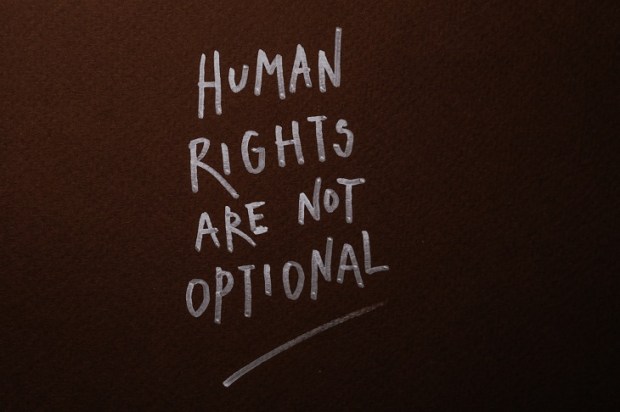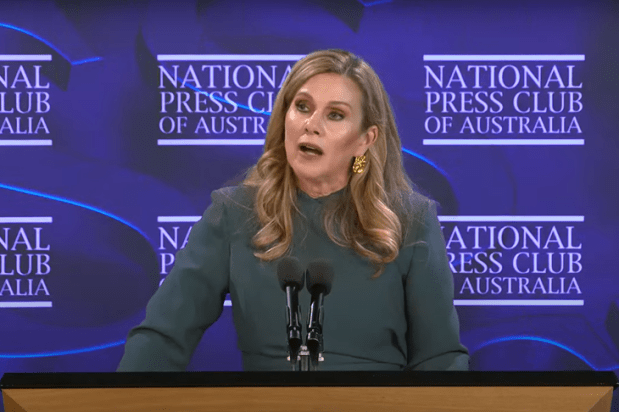Australia is caught in a history war that pits marginalised minorities against oppressive majorities. When politicians and commentators on both sides offer simplistic narratives, it becomes impossible to reconcile ourselves with our past in order to move forward into a shared future. Long-standing culture wars about colonisation and Indigenous suffering were given new ammunition during the Voice referendum campaigns. In the aftermath, we need to stop bickering among ourselves. Instead, Australian culture warriors would do well to learn from the Japanese public’s attempt to deal with its crisis of conscience after the second world war.
At the 1996 Sir Robert Menzies lecture, former Prime Minister John Howard lamented our country’s tendency towards the black armband view of history in which Australia’s past is depicted as a ‘disgraceful story of imperialism, exploitation, racism, sexism, and other forms of discrimination’. Howard’s left-wing successor, Kevin Rudd, also stated that it was time to ‘move beyond the arid intellectual debates of the history wars and the culture wars of recent years’.
The English-speaking world’s current history wars have been a tedious ping-pong match between two parties: radical progressive activists attempting to disavow all Western inheritances, and revisionists who either deny historical atrocities or imply that the important innovations (e.g., scientific discoveries, democratic systems, liberal values) that stemmed from the Enlightenment excuse past injustices. There is also a third group who take an approach that is only marginally better: books such as Douglas Murray’s The War on the West (2022) note that the West’s historical wrongdoings – such as slavery – were commonplace at the time and are still practised in many parts of the globe. While it is good that commentators like Murray acknowledge reality and criticise moralistic identity politics, they sidestep the question of how nations should reflect on past mistakes.
One reason for the stalemate in the Anglophone world’s history wars is that many combatants default to a worldview that pits ‘non-whites’ against ‘whites’. On the one side, progressive commentators like often lament the ‘white denial’ of ‘structural racism and its symptoms’. On the other side, we have views like that of Spectator Australia commentator Andrew Urban, who has criticised Australia’s tendency towards ‘minocracy’ which is the privileging of minority groups at the expense of majorities. Both these approaches gloss over many complexities.
Tessa Morris-Suzuki’s 2023 Distinguished Annual Lecture for the Modern Japanese History Association might inspire a different approach. Morris-Suzuki explores the social effects of the Allied Powers’ occupation of Japan from 1945-52, including the tense battles regarding how Japan’s national and military history should be remembered. She explores two central themes: the unintended consequences of re-education programs that aimed to impose a reductive view of history; and the power of individual narratives in the development of a nuanced and shared understanding of the past.
Morris-Suzuki’s analysis of the War Guilt Information Program highlights the perils of the top-down enforcement of preferred national narratives. The War Guilt Information Program was a post-second world war effort led by General Douglas MacArthur, the Supreme Commander of the Allied Powers, to reform Japan into a demilitarised, democratic nation. Organised by the US occupying authorities, the 1945–46 program aimed to instil a sense of culpability into the Japanese public through measures like censuring criticism of the Allied Powers, exaggerating the extent of Japanese violence, and forbidding the promotion of Shinto mythology, martial arts, and militarist ideology in popular culture (e.g., in Samurai movies) and in the media. The censorship program was intended to be a temporary intervention to clean out die-hard nationalist propaganda, but its remit expanded into a Civil Censorship Detachment (CCD) program. Under the aegis of the CCD, censors not only trawled through thousands of articles, books, films, and other media, but intercepted private letters and listened to recordings of phone calls, looking for statements of allegiance to feudalism and criticism of the allied occupation. Historian Jason Morgan has described the War Guilt Information Program as a ‘Stalin-like program of brainwashing’ in which ‘Japanese were taught to forget their history, and then to hate what little of their country they were still allowed to learn about’.
Even more alarmingly, the Allies deliberately chose to single out specific people for special opprobrium, such as wartime Prime Minister Tojo Hideki, while minimising the guilt of other equally culpable parties, like Emperor Hirohito. MacArthur had two reasons for downplaying the emperor’s role in Japan’s wartime atrocities. First, he believed that the Emperor was an important symbol in the Japanese psyche, and if he was deposed, the country would become more difficult to govern. Second, he believed that the Emperor would cooperate in the project of democratising and Christianising Japan to fill its ‘spiritual vacuum’. But by making light of the emperor’s culpability, MacArthur undermined the legal credibility of the Tokyo War Crimes Tribunal and the moral credibility of his re-education scheme in general.
To make anti-Japanese-militarism messages more palatable, the Allied leadership depicted citizens as victims of the Japanese military and of the media’s brainwashing campaign. As Naoko Shimazu has noted, television programs commemorating the anniversaries of Hiroshima and Nagasaki often depict the Japanese as victims of their own country’s militarism, rather than aggressors. This patronising view hinders our ability to understand the factors that led people to support Japan’s war regime and the strength of Japanese support for militarism, which persisted after the Allied occupation was over and the pro-Japanese propaganda had ceased. In some regards, it persists. Despite international pressure, the Japanese government has still refused to take adequate responsibility for the suffering of comfort women from other Asian countries (especially South Korea).
Many of the more condescending post-war attempts at re-education fell flat. The 1945–48 Japan Broadcasting Corporation’s radio program The Truth Can Now Be Told, for example, contained a series of educational dialogues between the narrator and Taro (who represents the Japanese everyman) on the costs of war. But listeners rejected its message. They recognised that the program was an attempt to make them feel guilty and resented that.
So, the War Guilt Information Program was not a huge success. In this, there are parallels with the West’s performative self-flagellating spiral, expressed largely in calls for ‘decolonisation’ diffused through left-leaning cultural institutions such as universities, the arts, and media. Neither crude attempts at narrative manipulation, nor simplistic race politics, then, are effective means of healing from the sins of the past. Instead, we should highlight the stories of individuals who lived through that past – especially when such stories complicate simplistic binaries of oppression vs. privilege.
The institutional attempts to depict the Japanese people as either guilty militarists or brainwashed victims failed. What did work, as Morris-Suzuki has noted, was the circle movement: the proliferation of small, informal discussion groups in which ordinary citizens shared honest personal reflections on history. These groups arose spontaneously to address a collective existential void resulting from war and defeat, and in the absence of trauma counselling and therapy. One such group was comprised of demobilised young men from Japan’s armed forces, who published a newsletter originally called Mumei no Hana (the nameless flower), which focused on individual accounts. The men were unified in their passionate hatred of war. Morris-Suzuki explains:
‘War responsibility’ here was not a matter of drawing up some kind of historical accounting spreadsheet on which one allocated guilt to nations… Rather, it was about reflecting on one’s own experience of history, understanding oneself as an agent of historical events … and thinking what one might have done differently with the wisdom of hindsight.
Memory would prove a more efficient way to encourage people to reflect on the past than propaganda. The antidote to combative and reductive views of history is a mosaic of individual narratives that convey the full moral texture of historical events, in which the lines between victimhood and complicity are often blurry. Such stories can converge on one unifying message: We are all characters in an unfolding history who have the power to steer our societies away from vicious conflict and into peaceful prosperity.
Frances An is a Young Voices contributor and psychology PhD student at the University of Western Australia. Her thesis explores the organisational culture and history of market research.

























